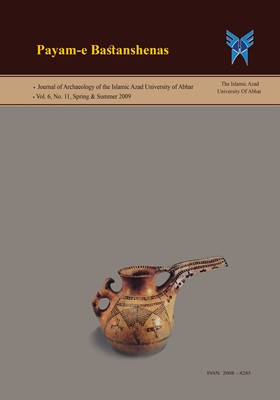Investigation and Description of Discovered Glazed Bricks from Three Season Excavations at Rabat Tepe II
Subject Areas : Prehistoric ArchaeologyAlireza Hejebri Nobari 1 , Reyhaneh Afifi 2
1 - Associate Professor, Department of Archaeology, Tarbiat Modares University, Tehran, Iran.
2 - M.A. in Archaeology, Islamic Azad University, Abhar Branch Abhar, Iran.
Keywords: Sardasht, Northwest Iran, Assyria, Iron age, South of Urmia lake, Mannea, Rabat, glazed bricks,
Abstract :
Rabat Tepe II is located in west Azerbaijan province and eastern side of Lower Zab river. Until now, three seasons of archeological excavation performed in this arae. The location of Rabat Tepe in south-east of Mannean domain was influenced by two powerful empires namely Assyrian and Urartian. The effect of these two empires to each other in one side and getting familiar with the vague points of these sovereignties in North west of Iran in an other side increase the archeological aspect of studies and research in Rabat TepeII. The result of these three seasons research is achieving to a lot of potteries, bricks and architectural documents that some of them were discovered for the first time in Northwest of Iran. Rabat tepe earthen wares found in Sardasht are almost similar to those achieved primarily from Galaichi in Bokan. These findings have important role in studying arthistic and technological contexts and help us to restudy the religious, political and social aspects of this area inhabitants. One point which increases the importance of these bricks is the existence of epigraphical clinker bricks. By translation and interpreting of these bricks the name of Mannaean gods, country and province was appeared. Undoubtedly, comprehensive recognition of discovered bricks in this site which spend its first years of excavations can be a proper basic for scientific classification of these precious findings.
_||_


